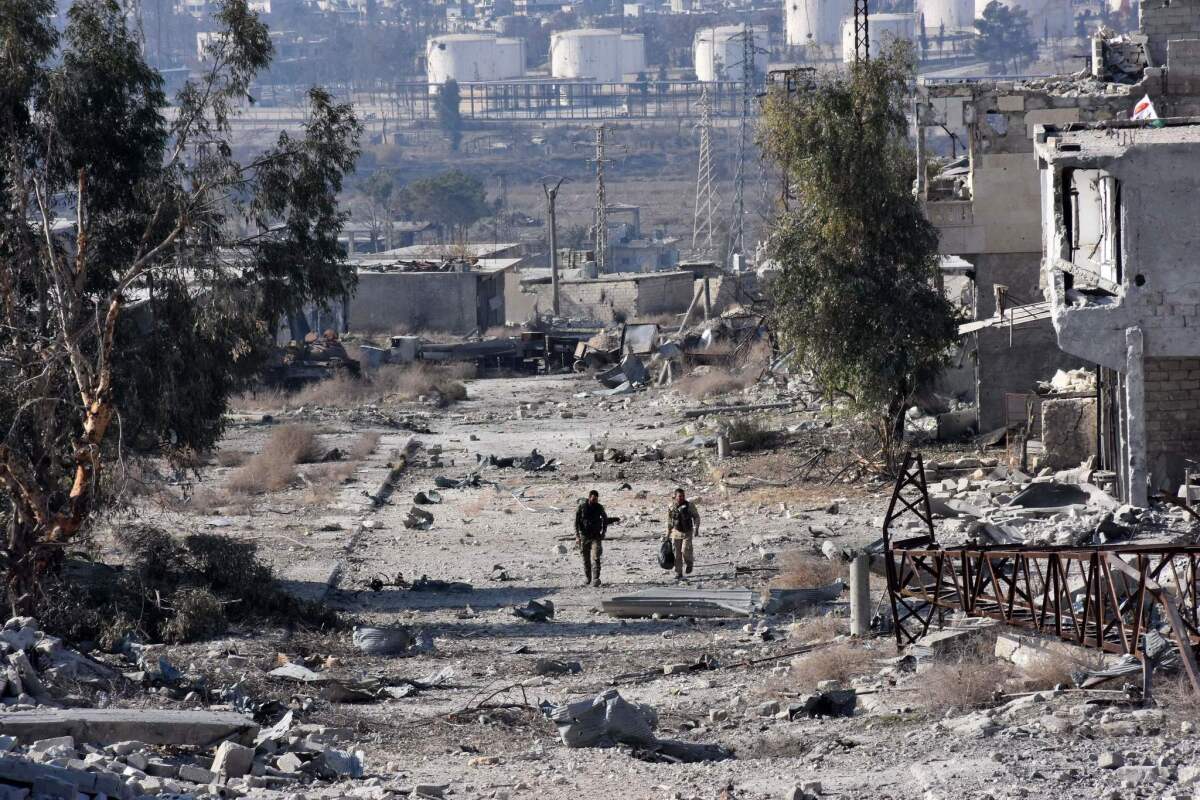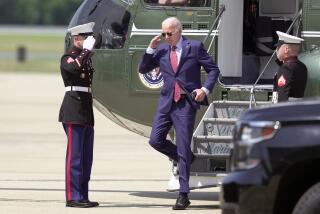Trump still lacks Syria strategy as fighting escalates

Washington — The U.S. military’s role in Syria has steadily escalated since President Trump took office, but even as fighting intensifies, the administration has said little to the public about its goals, nor has it released a long-stalled update on its strategy for the war-torn country.
The latest escalation came over the weekend as U.S. forces shot down a Syrian attack plane near Islamic State’s self-declared capital of Raqqah, where multiple warring groups have been engaged in increasingly intense fighting.
The Pentagon has now twice deliberately targeted Syrian President Bashar Assad’s military and launched three other airstrikes against what it calls “pro-regime” forces -- a sharp reversal of the hands-off stance toward Assad that the U.S. took during the opening weeks of Trump’s presidency.
Despite that shift, however, administration officials have not made clear the full objectives of U.S. policy or its limits.
“Right now what we have is a policy of ambiguity,” said Ilan Goldenberg, director of the Middle East security program at the Center for a New American Security. “And what do adversaries do when there’s ambiguity? They test.”
Syria and its allies will continue to grab territory until they are told there are consequences, he said.
Administration statements since the downing of the Syrian jet have done little to clarify the policy.
“The escalation of hostility among all the factions that are operating there doesn’t help anybody,” White House spokesman Sean Spicer said Monday. “The Syrian regime and others need to understand that we will retain the right to self-defense for coalition forces aligned against ISIS,” he added, using the administration’s preferred acronym for the Islamic State militants who still control a large swath of territory in eastern Syria.
The mounting violence around Raqqah and Syria’s eastern border region illustrates the difficulty facing the administration as it seeks to simultaneously accomplish several sometimes conflicting tasks: fight Islamic State, coordinate and defend Syrian rebel groups that are trying to overthrow the government, and counter the influence of Iran, which, along with Russia, has backed the Assad government.
The problem is not unique — the Obama administration was widely criticized for lacking a coherent Syria strategy — but Trump’s difficulty in developing one comes as the U.S. military presence in the country has steadily escalated.
The Pentagon has deployed hundreds of U.S. special operations forces to work alongside Syrian rebels fighting Islamic State. Elsewhere in the country, U.S. warplanes and a Marine Corps artillery unit provide firepower on a daily basis for the advancing forces.
The risk of further escalation is steadily mounting. Armed forces belonging to the U.S., Russia, Syria and Iran are operating in an increasingly compressed environment as they converge on Syrian cities now controlled by a common enemy: Islamic State.
Once that territory is retaken -- and Islamic State militants are gone -- the White House will have to decide whether it will continue to deepen its involvement and protect its partners against Assad’s forces and their backers.
The U.S. has been on a potential collision course with the Syrian government at least since President Obama authorized air strikes in 2014 and introduced special operations forces a year later.
Until recently, however, Syrian forces and the U.S. and the rebel groups it backs had largely focused on different parts of the country. That changed when two different groups of U.S.-supported rebels launched separate campaigns for control of Raqqah and Dair Alzour, provinces of eastern Syria in which Islamic State holds significant territory.
Their advance prompted Damascus and its allies to step up their own operations in the two provinces.
Those moves have led to clashes between armed groups backed by the U.S. and those backed by the Syrian government.
On Sunday, Assad’s forces attacked a U.S.-backed alliance of Kurdish and Arab militia fighters known as the Syrian Democratic Forces in the town of Jadin, south of Raqqah, Islamic State’s self-declared capital. The Syrian Democratic Forces have been part of a large-scale offensive aimed at capturing Raqqah.
The attack drove the militia fighters from the town, so the U.S. scrambled an aircraft to roar over the battlefield in “a show of force” that halted the pro-government forces’ advance.
In the air, however, a Syrian Su-22 attack aircraft bombed the American allies. That prompted a U.S. F/A-18 fighter jet to shoot it down — the first air-to-air kill by U.S. forces in two decades.
After the shoot-down, the Pentagon issued a statement stressing that it took a defensive action and did not seek “to fight Syrian regime, Russian, or pro-regime forces partnered with them.”
That was the same reason given for launching three airstrikes against forces loyal to Assad in the town of Tanf, farther south along the Iraqi-Syrian border, where U.S. forces train Syrian rebels at a small military base. Earlier this month, a U.S. fighter jet shot down an Iranian-made drone that dropped a bomb near forces patrolling the base.
U.S. officials have been stressing they have no plans to escalate fighting against Assad.
Meantime, Assad’s forces have repeatedly tested the U.S. to see how much they can get away with. Their goal appears to be to prompt the U.S. to state on record that it has no business inside Syria after Islamic State militants are defeated, said Jennifer Cafarella, a Syria analyst at the nonpartisan Institute for the Study of War in Washington.
“The goal is to get the U.S. to repeatedly confirm that it has no military intentions inside Syria, aside from eliminating the Islamic State,” she said. “That cedes the rest of Syria to the regime and its partners to do what they want.”
Unlike the Obama administration, Trump has not called for Assad to leave power to a transition government. Nor has the new administration made a major diplomatic effort to persuade the warring factions into a cease-fire and peace negotiations.
Gen. Joseph F. Dunford Jr., chairman of the Joint Chiefs of Staff, was repeatedly asked during an appearance Monday at the National Press Club in Washington what the administration’s strategic policies were inside several countries in the Middle East and Africa where the U.S. military is active.
“We’re trying to support our partners on the ground in driving the level of violence down to where local security forces can actually deal with security challenges with a minimum amount of international support,” he said. “And we’re trying to do that from West Africa to Southeast Asia because what we’re dealing with is a transregional threat.”
Twitter: @wjhenn
ALSO:
Climate change is real: Just ask the Pentagon
Trump administration stops disclosing troop deployments in Iraq and Syria
U.S. launches dozens of missiles at Syria in response to chemical weapons attack
More to Read
Sign up for Essential California
The most important California stories and recommendations in your inbox every morning.
You may occasionally receive promotional content from the Los Angeles Times.











